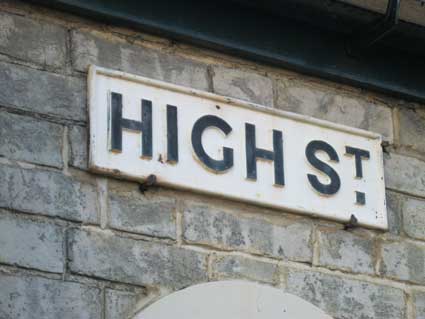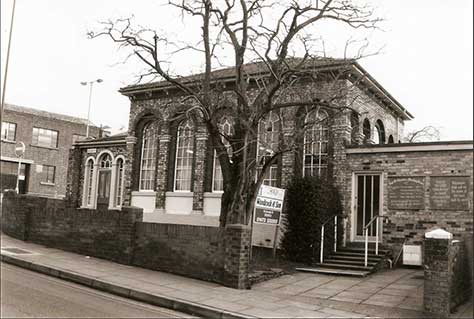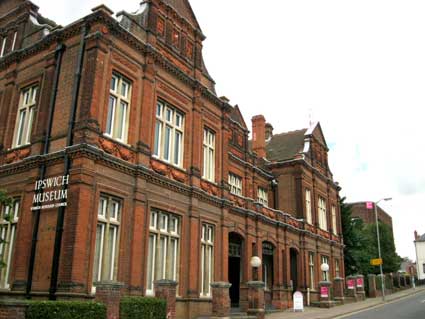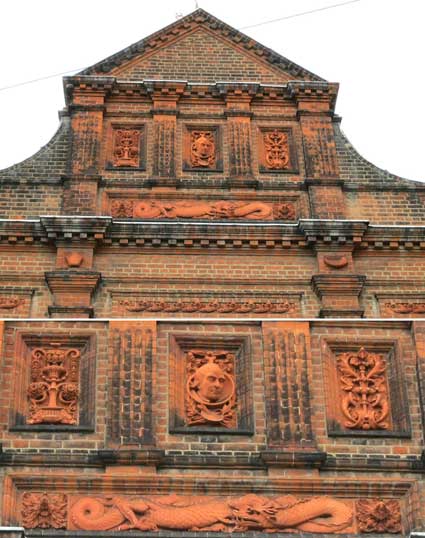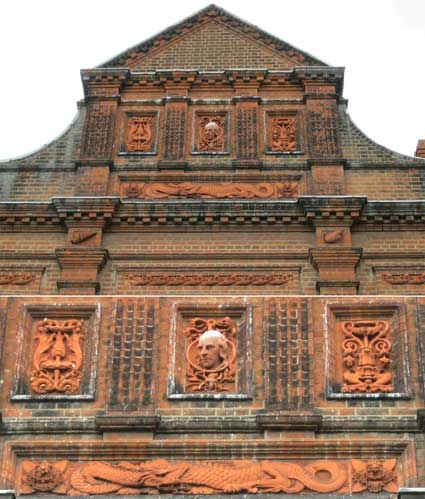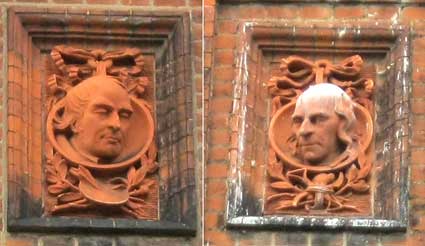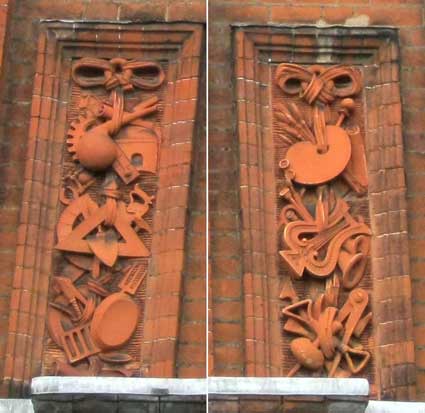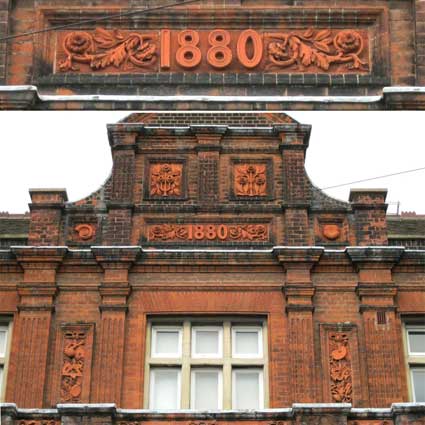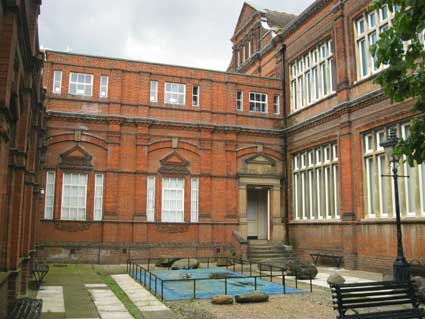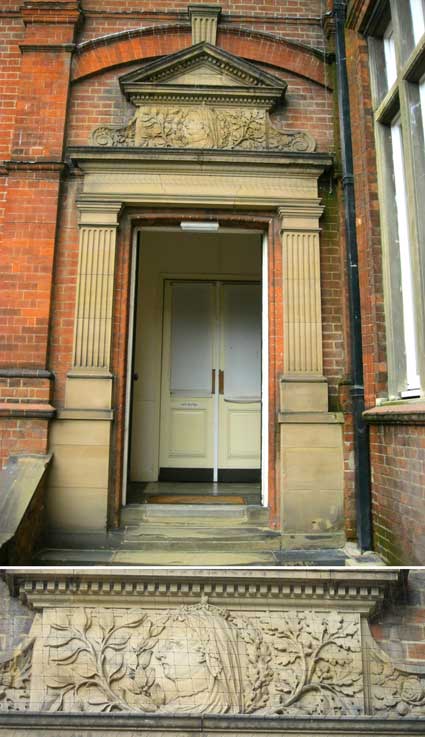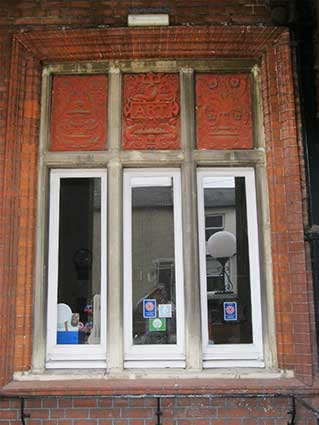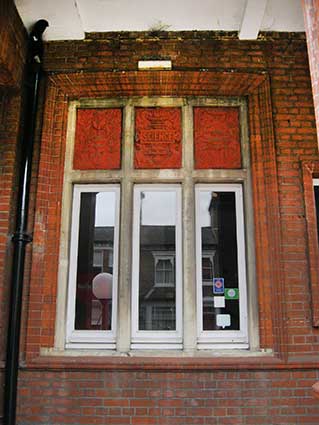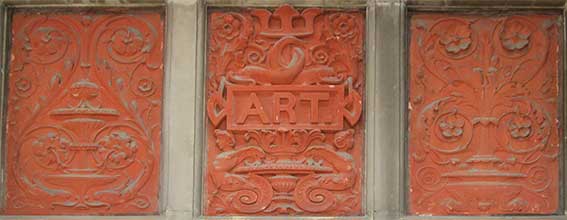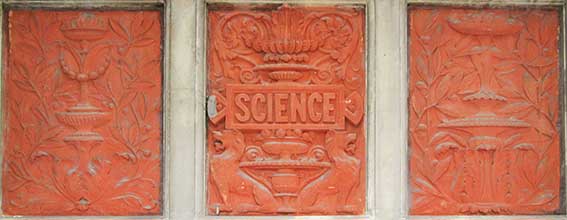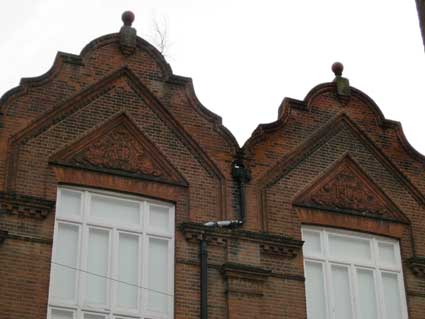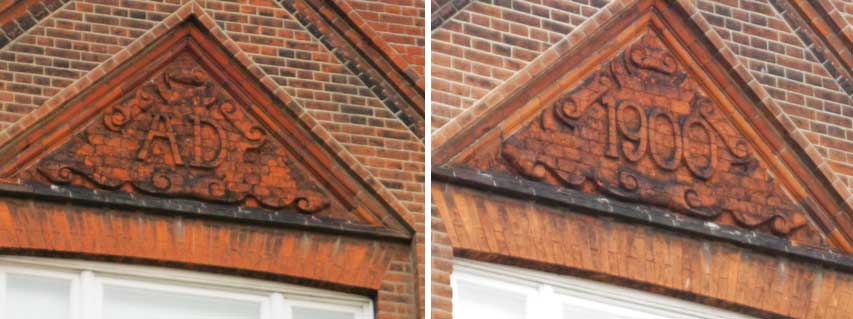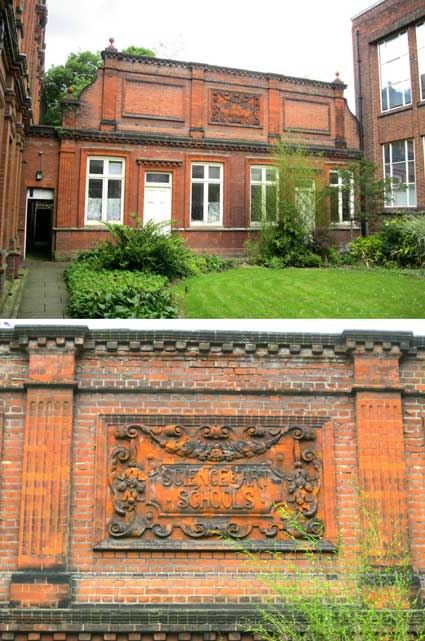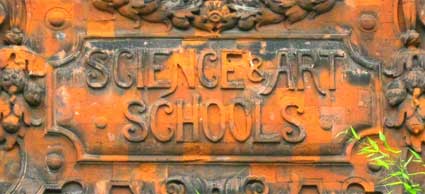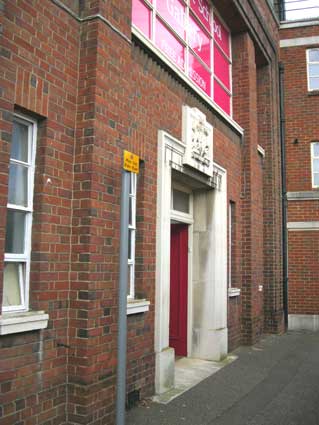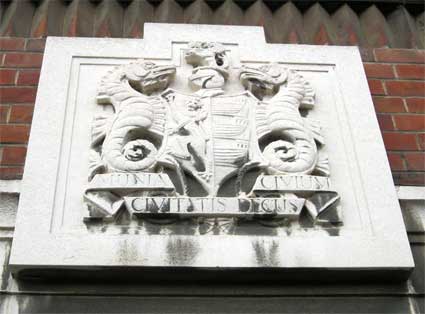attached to the Suffolk whites by
only three of the angled supports often used for such heavy signs.
[*Bettley: Suffolk East Pevsner
(see Reading List) tells us that this was
built as The Jerusalem
Church (Swedenborgian) in 1847. The monochrome photograph above was
taken by Tom Godris in the 1990s, captioned 'Bretheren Meeting Hall',
the religious hall had clearly been sold at the time; the door to the
right has been blocked up and the building is now residential and
heavily overgrown with vegetation. The photograph can be found on the
Ipswich Society's Image Archive (see Links).]
Claude Street
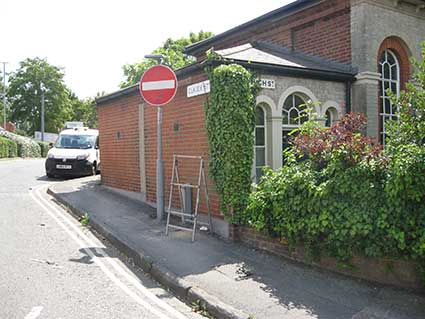
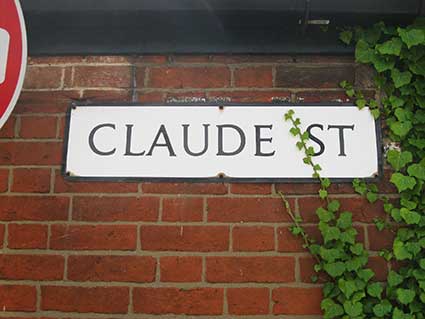 2018 images
2018 images
The side wall of the former Brethren Meeting Hall bears a street nameplate: 'CLAUDE STREET' which takes us back to a time when the 'Charles Street Car Park' area was residential. Claude Street was the tiny east-west road running (oddly) parallel with Charles Street linking High Street and the northern part of Fitzroy Street – it still qualifies to bear a street nameplate. In fact, the road pattern and naming has changed radically here: Claude Street now runs behind the Crown House office block and northwards behind the gardens of houses on High Street, then follows its original course to High Street; Fitzroy Street is now a small north-south road making up the quadrilateral with Charles Street. See our Street name derivations page for the source of 'Claude'.
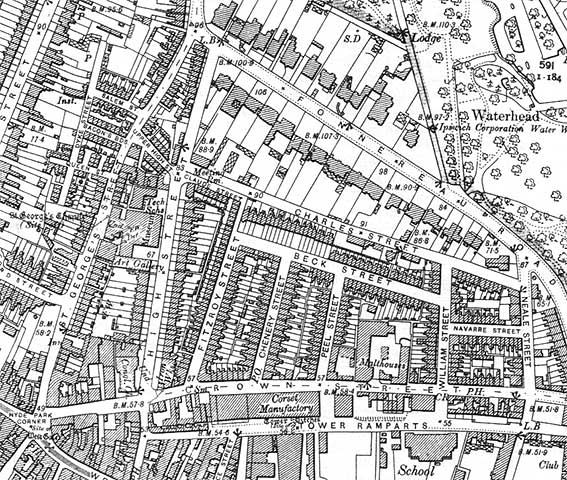 1902 map
1902 map
See our Charles Street page for much more on this lost residential development between Charles Street and Crown Street.
Fonnereau Road

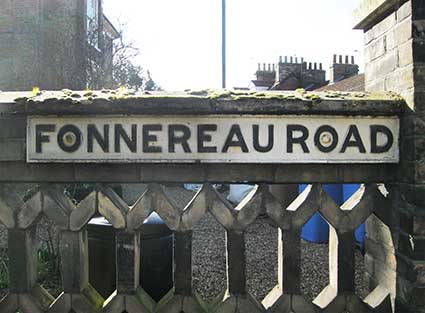 2019 images
2019 images
At the top of High Street is the junction with Fonnereau Road, named after one of the wealthy families who owned Christchurch Mansion (see Street name derivations). This example of a cast street nameplate with curved, raised border sits under the capstones of the garden wall of number 65. Instead of the usual angled supports around the edge, two holes have been drilled through the centres of the letters 'O' with lage bolts fixing the sign; this is presumably because of the tight fit beneath the overhang. The characteristic stylish 'pierced' brickwork in Suffolk whites is seen on the front of a number of large houses in the area; see our Street furniture page for another example in Suffolk reds on the corner of Henley Road and St Edmunds Road, under 'Water valve markers'.
Ipswich Museum
Claude Street

 2018 images
2018 imagesThe side wall of the former Brethren Meeting Hall bears a street nameplate: 'CLAUDE STREET' which takes us back to a time when the 'Charles Street Car Park' area was residential. Claude Street was the tiny east-west road running (oddly) parallel with Charles Street linking High Street and the northern part of Fitzroy Street – it still qualifies to bear a street nameplate. In fact, the road pattern and naming has changed radically here: Claude Street now runs behind the Crown House office block and northwards behind the gardens of houses on High Street, then follows its original course to High Street; Fitzroy Street is now a small north-south road making up the quadrilateral with Charles Street. See our Street name derivations page for the source of 'Claude'.
 1902 map
1902 mapSee our Charles Street page for much more on this lost residential development between Charles Street and Crown Street.
Fonnereau Road

 2019 images
2019 imagesAt the top of High Street is the junction with Fonnereau Road, named after one of the wealthy families who owned Christchurch Mansion (see Street name derivations). This example of a cast street nameplate with curved, raised border sits under the capstones of the garden wall of number 65. Instead of the usual angled supports around the edge, two holes have been drilled through the centres of the letters 'O' with lage bolts fixing the sign; this is presumably because of the tight fit beneath the overhang. The characteristic stylish 'pierced' brickwork in Suffolk whites is seen on the front of a number of large houses in the area; see our Street furniture page for another example in Suffolk reds on the corner of Henley Road and St Edmunds Road, under 'Water valve markers'.
Ipswich Museum
 The town's
municipal Museum started life in 1854 on the
'kink' in Museum
Street opposite the Museum Street
Methodist Church; the original building stood empty for
so long in recent years, but is now
Arlington's Restaurant. It was one
of
the first such museums in the country and clearly wanted to promote the
twin
Victorian achievements of art and science. The Grade II Listing reads:
'The old Museum, opened in 1847 was designed by Christopher Fleury, a
local architect. It is a large red brick building with a stucco (hard
plaster) front
in classical style with panelled parapet, a plain band (which now
replaces the original cornice) and massive Tuscan orders on octagonal
base rising through 2 storeys at the corners. 2 storeys. 3 window
range, double-hung sashes with glazing bars. The centre part, of
doorway and one window range above, breaks forward slightly. The side
windows have moulded and shouldered architraves with
balustraded panels beneath the sills. The centre window has a Venetian
style surround with a semi-circular domed arch with shell ornamentation
and flanking paired Ionic columns with frieze and cornice. The doorway
has fluted Doric pilasters, frieze and cornice, and is flanked by C20
shop fronts. The front originally has a projecting Doric columned
porch. The north side is in panelled red brick, without windows. In the
interior a heavy balustraded staircase leads to a 1st floor hall which
is top lit with a gallery (blocked).
The town's
municipal Museum started life in 1854 on the
'kink' in Museum
Street opposite the Museum Street
Methodist Church; the original building stood empty for
so long in recent years, but is now
Arlington's Restaurant. It was one
of
the first such museums in the country and clearly wanted to promote the
twin
Victorian achievements of art and science. The Grade II Listing reads:
'The old Museum, opened in 1847 was designed by Christopher Fleury, a
local architect. It is a large red brick building with a stucco (hard
plaster) front
in classical style with panelled parapet, a plain band (which now
replaces the original cornice) and massive Tuscan orders on octagonal
base rising through 2 storeys at the corners. 2 storeys. 3 window
range, double-hung sashes with glazing bars. The centre part, of
doorway and one window range above, breaks forward slightly. The side
windows have moulded and shouldered architraves with
balustraded panels beneath the sills. The centre window has a Venetian
style surround with a semi-circular domed arch with shell ornamentation
and flanking paired Ionic columns with frieze and cornice. The doorway
has fluted Doric pilasters, frieze and cornice, and is flanked by C20
shop fronts. The front originally has a projecting Doric columned
porch. The north side is in panelled red brick, without windows. In the
interior a heavy balustraded staircase leads to a 1st floor hall which
is top lit with a gallery (blocked).
